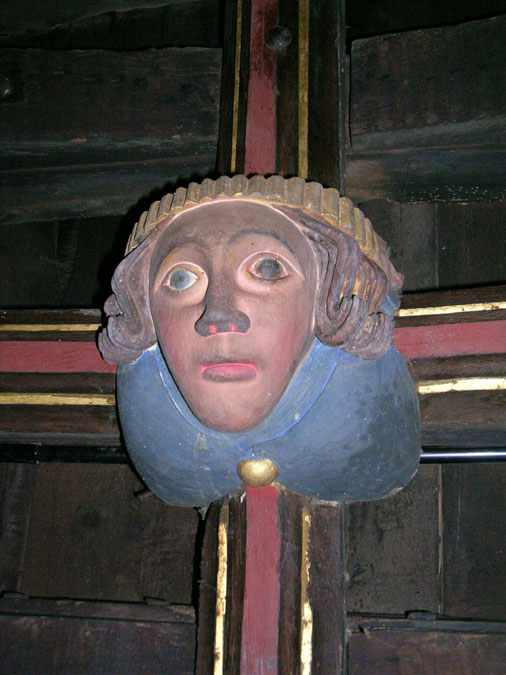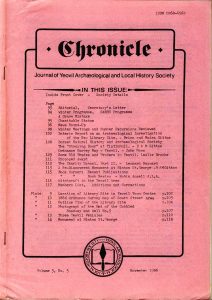This article came from the Chronicle published November 1986. Page 112.
The Yeovil Charity School (Part 2 of 3)
Other Parts: Part 1 of 3 and Part 3 of 3
Author: Leonard Hayward
The success of Martin Strong’s revival of the Chantry School lasted only half a century. A Charity Commissioners’ Report in 1821 revealed that fewer than 10 boys were attending during the last years of John Hodges’ headmastership. He had for several years used the lower schoolroom as a warehouse for pottery, and suffered much from gout before his death in 1803 at the age of 73. “He was a good master in his time”, reported a former pupil, but as he knew no Latin, payments ceased under the Cheesman endowments of 1711 and 1730 “to instruct and make young men fit for Oxford and Cambridge”. The appointment of the Rev.Thomas Tomkins in 1804 revived interest: public subscriptions were raised, the Chantry repaired, and by 1812 over 60 boys were attending. Under the Nowes foundation for Preston and Alvington, clothing was provided for 10 boys, with an apprenticeship premium of £5 at the age of 13. Each boy was entitled to 3 shirts, a blue coat and waistcoat, a pair of leather breeches, a blue cap, one pair of shoes and 2 pairs of stockings: rising prices made it difficult to honour this obligation. From the other Trusts were met the cost of repairs to the Chantry, firing, pens, ink and paper. Subscribers could each nominate 2 boys for free schooling.
All pupils were taught reading, writing, arithmetic and the Church Catechism, and attended church service on Sundays. Mr.Tomkins employed an usher (or assistant) for two days a week at an annual salary of £8 to £10 On other days the master was assisted by “the boy most able to teach and of the best behaviour. This I consider a stimulus to the improvement of the boys in the school”.
Mr.Burbage, a leather parer, complained to the Commissioners that his son worked in Mr.Tomkins’ garden for an occasional penny. The headmaster retorted that it was “impossible for the boy to improve much, from his being kept so often at home to work for his father”. Mr.Tomkins explained that boys worked in his garden in dinner time and after school hours with the consent and generally at the request of parents and were paid: his object was “to accustom them to habits of industry and to prevent them from mixing with idle and reprobate persons; and this, I conceive, is not inconsistent with the 5th order, entered in the School Book on the first establishment of the school ‘that the boys be taught to work as early as may be”‘.
Mr.Tomkins asserted that as in other Charity Schools it was difficult to fill vacancies as long as parents needed the labour of their children to support their families. Parents were less interested in education than in the clothing provided, and the boys were often remiss in their behaviour. He then had only one Latin pupil, but claimed “several. of my scholars have done me credit in that language”.
Before Mr.Tomkins’ death. in 1839, he had been taking private pupils for a classical education. In July of that year, 32 Yeovil inhabitants wrote to John Batten, clerk to the Charity Trustees, about the need to appoint a classical tutor. The Rev.John Langdon of St.John’s College, Cambridge, was chosen as headmaster, with the right to carry on a private day and boarding school in addition to his duties in the Charity School. The foundation of Huish National School in 1845, and of many small private schools, lessened the importance of the Chantry. The building itself, now legally vested in the Charity School Trust, was pulled down in 1854 at the request of the churchwardens: it was dilapidated and its site badly needed to enlarge the burying ground.. It was rebuilt for £300 in its present situation next to the Sunday Schools, with the aid of a £100 grant from the Nowes Foundation. Four years later, the Rev. John Langdon resigned. Under his successor, Henry Monk, the Charity School struggled on until its closure in 1888, after more than three centuries of chequered existence.

